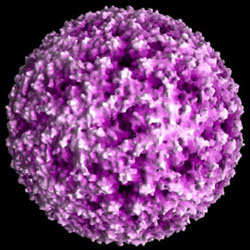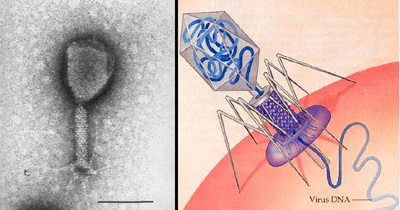BIOL 1400 -- Lecture Outline 23
"Science is the whore of industry and the handmaiden of war." -- Edward Abbey
I. Wrap-up. . .
- DNA replicates by "unzipping" the double helix and then making new strands
that complement each of the older strands.
- Normally, when DNA replicates, it is copied exactly, with the help of several
enzymes (the DNA polymerases).
- There are other enzymes that literally "proofread" a cell's DNA and repair
damage to it.
- However, they don't work perfectly. If they make a mistake, the base-pair
sequence of a cell's DNA may be altered. This is a mutation.
- The effects of a mutation may be totally unnoticeable (far and away the most common),
beneficial, or harmful.
- Ultimately, this is the source of evolutionary variation -- now we can
answer the question that was bugging Darwin: where does variability come from?
- A mutant allele that has a beneficial effect should become more frequent within
a population. One that does not should become less frequent.
II. A bit about viruses. . .
- Structure
- A virus is a piece of DNA or RNA surrounded by a capsid, a
coat made of proteins.

Surface reconstruction of the foot-and-mouth disease virus (from the
Institute for Molecular
Virology)
- Viruses are too small to be seen with the light microscope. . .
- . . . but they cause many diseases of humans, other animals, and plants. EXAMPLES:
Polio, AIDS, Ebola fever, hanta fever, measles, mumps, smallpox, warts. . .
- Whether viruses are living or not is a matter for philosophical debate --
in some ways they straddle the border between life and non-life. . .
- How they work
- Viruses are incapable of reproducing by themselves. In isolation, viruses are
completely inert -- they don't carry out respiration, use ATP, or do anything at all.
- However, a virus that contacts a cell can insert its DNA or RNA into the cell.

Left: Electron micrograph of a virus known as bacteriophage.
Right: Diagram of bacteriophage injecting its DNA into a host cell.
- The cell then starts replicating the DNA or RNA, and starts making new virus
proteins. The cell is literally turned into a factory for new viruses.
- If the virus contains RNA, the RNA is "reverse transcribed" back into DNA when
the host cell is infected. The DNA is then transcribed and translated to make new
viruses.
- This is an exception to the general rule that information only goes from
DNA to RNA to proteins (once called the Central Dogma of Molecular Biology).
- RNA viruses that are "reverse transcribed" like this are called retroviruses.
Human immunodeficiency virus, or HIV, is the best-known
retrovirus.
- Eventually, the viruses burst out of the cell (usually killing it) and infect more
cells.
- Some viruses wrap themselves in fragments of the host's cell membrane
when they burst out -- this makes them harder to detect by the host's immune
system. (Influenza and HIV are two examples of viruses that do this.)
I
Go to Previous Notes |
Return to Lecture Schedule |
Return to Syllabus |
Contact the Prof |
Go to Next Notes

